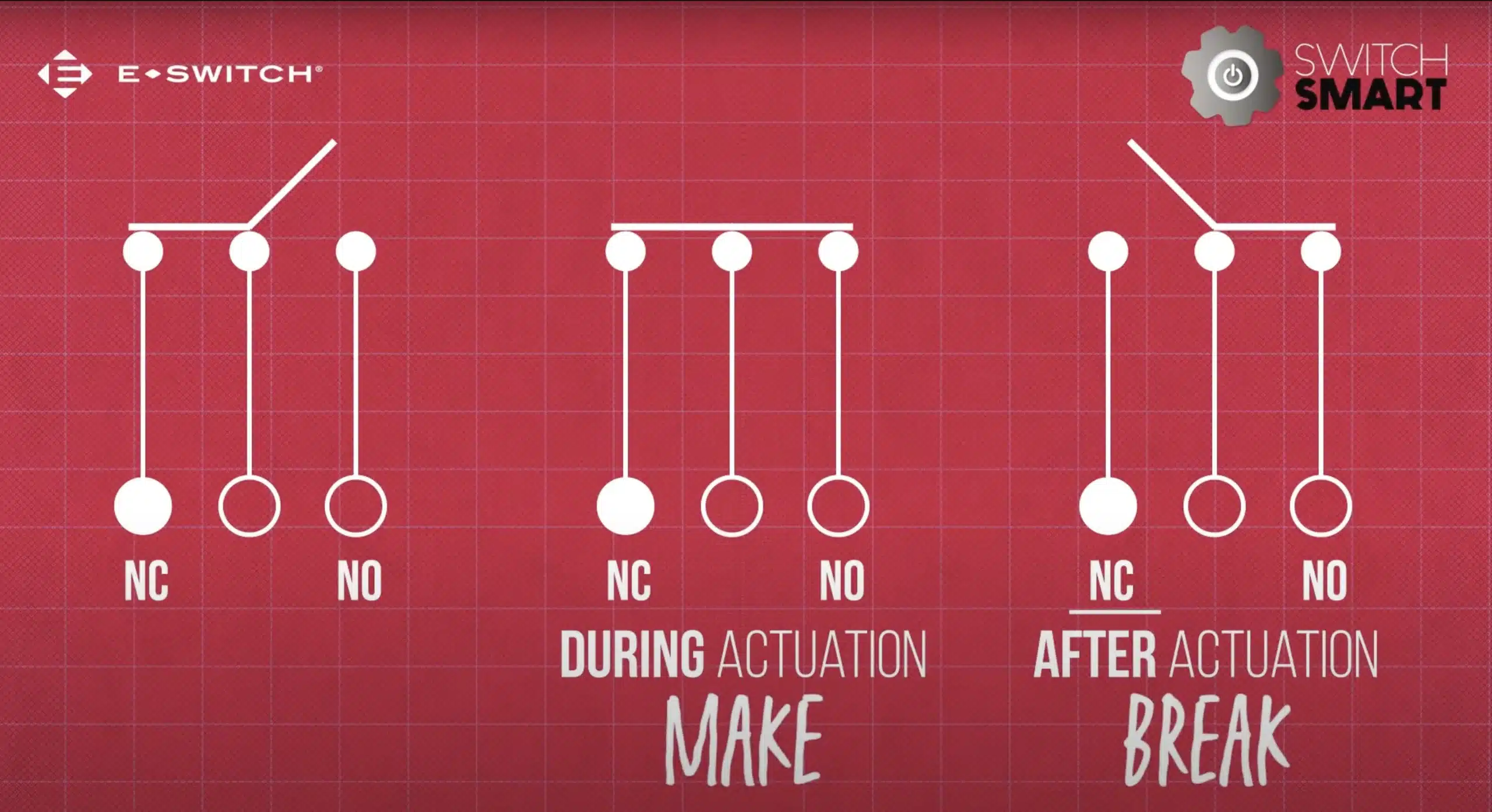What Does Make-Before-Break Mean?
Have you heard of the term “make or break?” Wait, or is it “make before break?” Or maybe “break before make?” What about “shorting vs non-shorting?” One step at a time: What does “make-before-break” mean exactly? We’ll get through this together.
A simple explanation for the phrase “make” is the act of closing a normally open contact. By pressing the actuator, the contact points complete the circuit and allow the current to flow from one contact point to the other. So, to “break” a circuit is the opposite. Releasing the actuator on a momentary function switch opens the switch contact points and that breaks the circuit flow.
Make-before-break (MBB) occurs in switches that will complete a new circuit before breaking the old one. The normally open contacts are guaranteed to close, hence “make,” before the normally closed contacts open, hence “break.”
Here’s an example. Here the circuit is open or in its “nature state.”
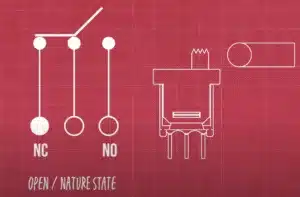
The actuator is pressed, therefore “making” the normally open circuit and connecting the contact points.
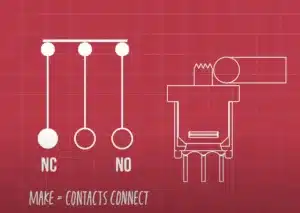
As the actuator continues to be pressed, the normally closed circuit is now broken. Now the normally closed contact is open and the normally open contact is closed. This is sometimes called a “shorting switch” because contacts come together before separating.
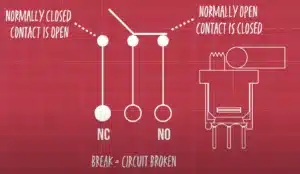
How Is Break-Before-Make Different?
Break-before-make (BBM), on the other hand, means that the switch will only complete one circuit at a time, leaving a short interval between the time one circuit opens and the next circuit closes. The normally closed contacts are guaranteed to open first, hence “break,” before the normally open contacts close, hence “make.”
Here’s an example. Here the actuator is open or in its “nature state.”

The actuator is now pressed and the circuit is momentarily broken.
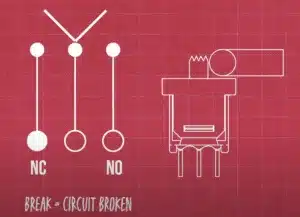
As the actuator continues to be pressed, the normally open contact is now closed and the circuit is made. This is also known as a “non-shorting switch” because the contacts separate before coming together.
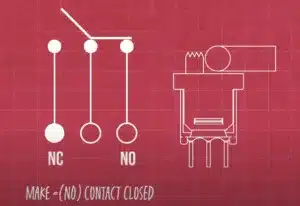
In a shorting switch, as the movable contact shifts between two fixed contacts there’s a brief period when it’s in contact with both fixed terminals, creating a short-circuit. In a non-shorting switch, the movable contact disengages from both fixed terminals during movement, preventing the potential for a short-circuit.
What Are Examples Of Make-Before-Break vs Break-Before-Make?
Make-before-break rotary switches are often used in audio equipment to select different audio sources. If you used a break-before-make, then the circuit would break first and there’d be no signal at all for a brief period, which would cause a loud and unpleasant popping sound. So a make-before-break switch is used instead.
Shorting switches are also used in devices such as electrical testers, where the switch needs to be connected to at least one fixed contact at all times in order to prevent over-voltage in the circuit being measured.
A break-before-make might be used to switch two different voltages to a circuit (i.e. low and high speed). You may not want the two voltages to be connected/shorted together, so the circuit must break/open before the next circuit can make/close.
What Is Shorting Vs Non-Shorting On Rotary Switches
When we see the term “shorting” for rotary switches it’s also be known as make-before-break. An example of this is if you’re switching between positions one and two, the rotary switch will momentarily “short” position one and two together when you rotate the switch.
A non-shorting switch is break-before-make and the connection is temporarily broken when you switch between positions one and two, giving a brief moment where nothing is connected.
